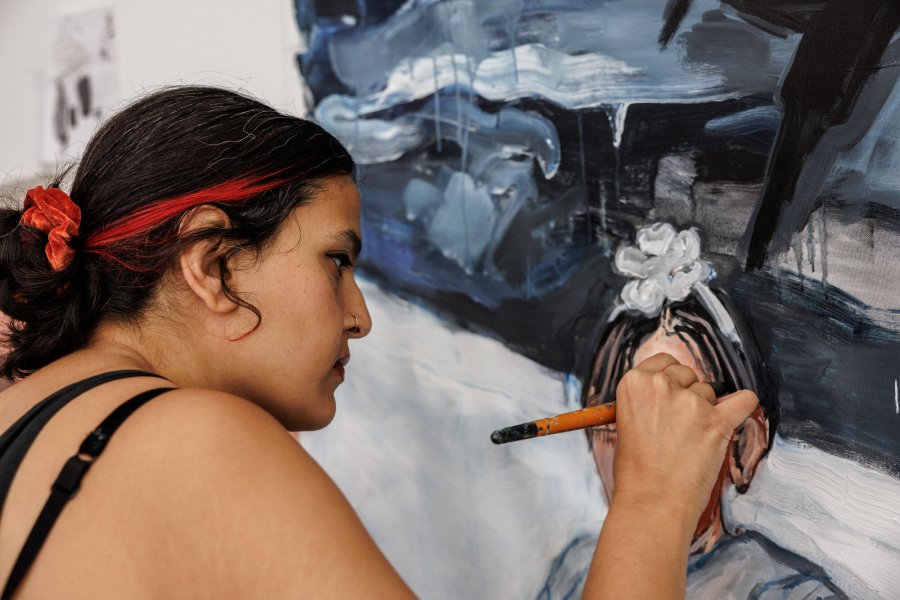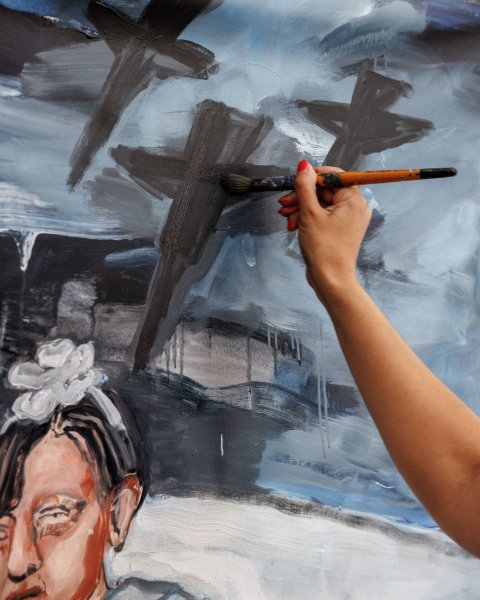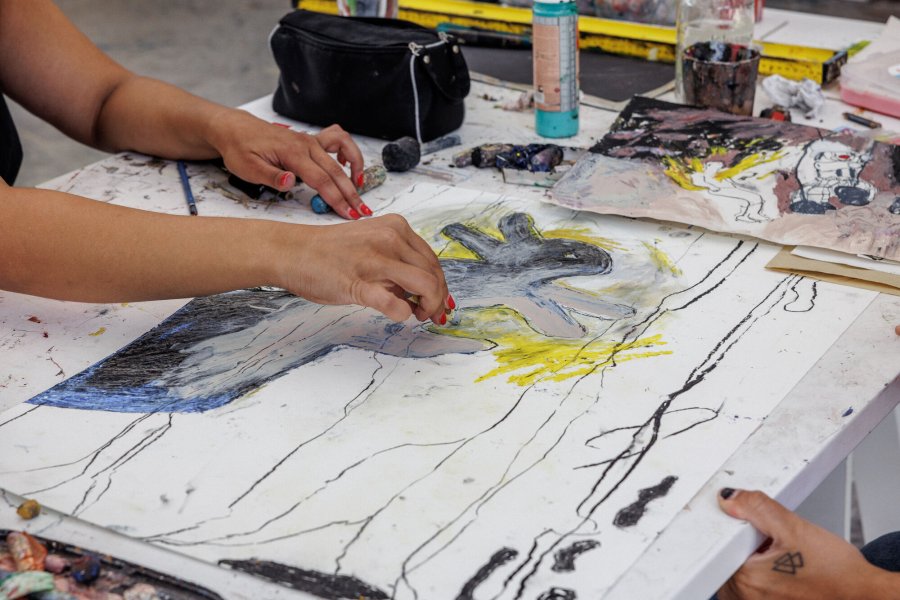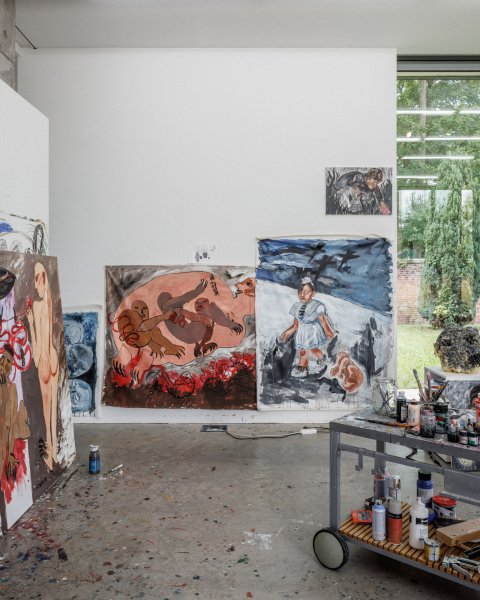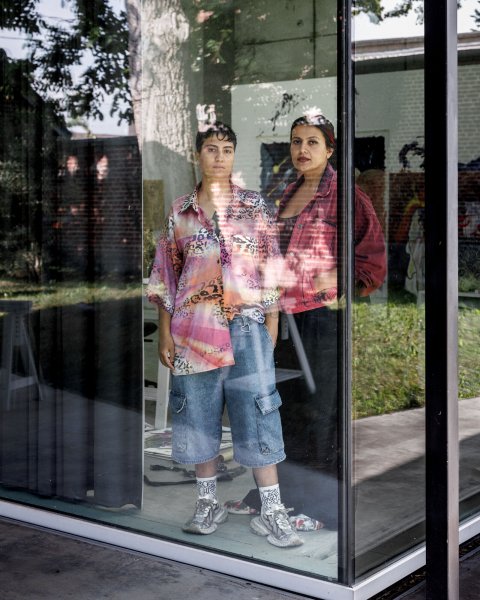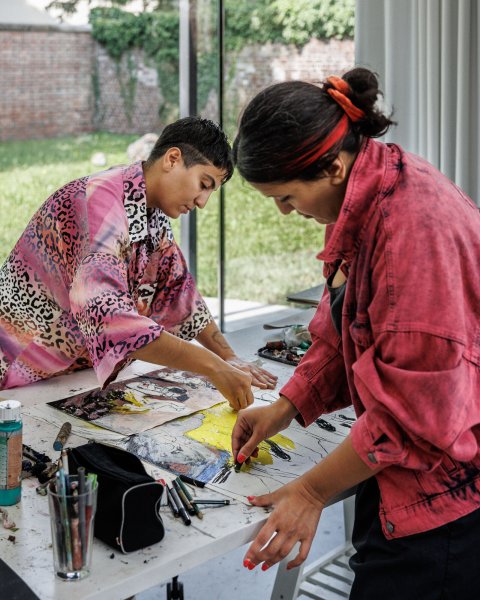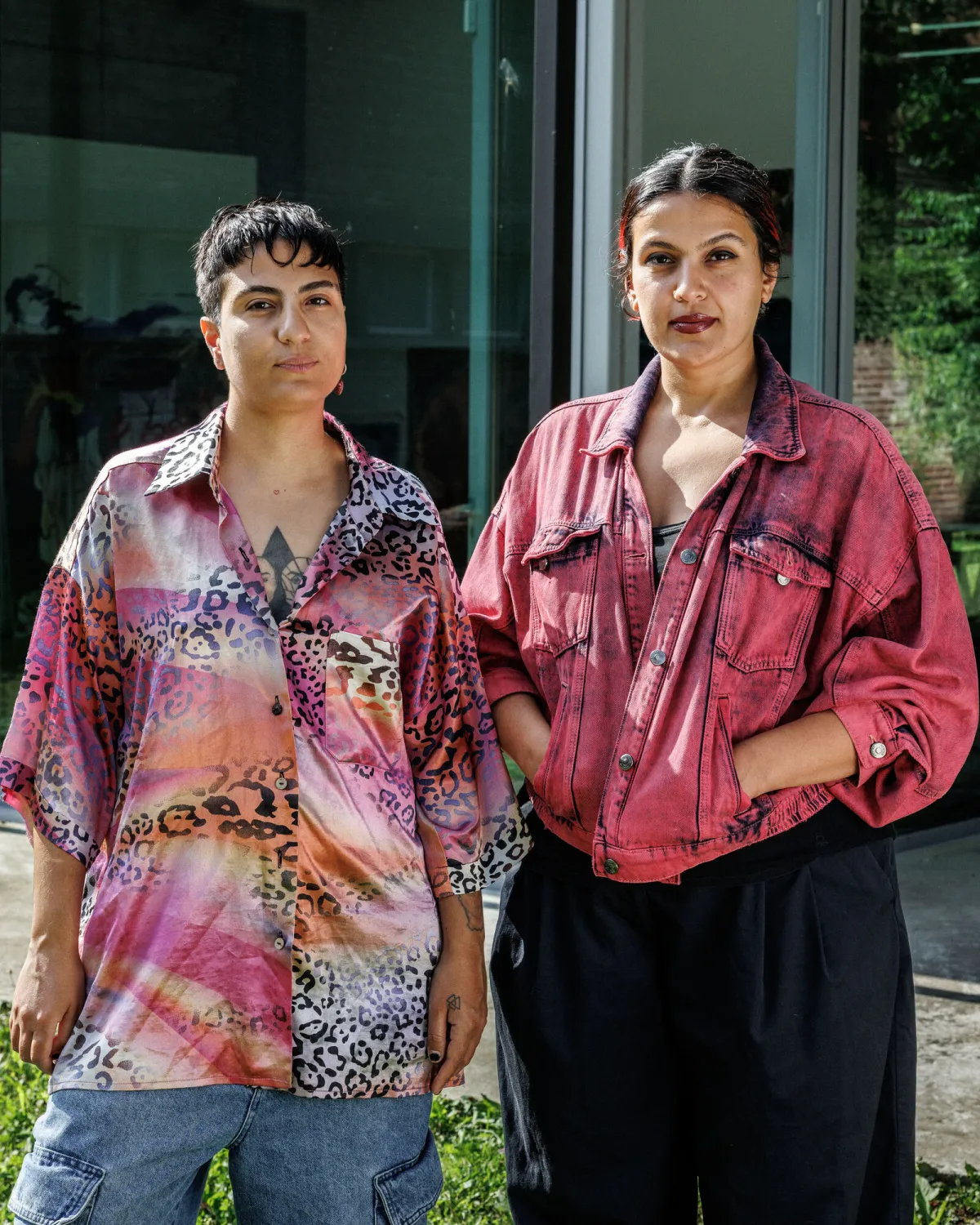
Artists residency of Lens — Tirdad Hashemi & Soufia Erfanian
Welcomed to the Pinault Collection artists' residency in Lens this year, Tirdad Harshemi looks back on the eleven months of creative work they shared with their partner Soufia Erfanian.
What experience do you remember most from your eleven months at the Pinault Collection artist residency?
One of the interesting aspects of being in Lens was, to maintain our social life, our Parisian friends had to come and stay with us — which I found very exciting because I have always dreamed of collective living, just as I collaborate in my work. I’ve never lived entirely alone, because I feel that sharing perspectives with others teaches me a lot and shows me new ways of thinking. For me, this way of living is much more suitable and helps me grow, compared to living in solitude. At other times, we ourselves had to travel—and during this past year, I can say Soufia and I discovered many parts of northern France that I had never visited before, which was fascinating in itself. From an artistic perspective, being in Lens also offered something valuable: life there is much calmer than in a big city, which gave me more time and focus. The studio at the Pinault Collection’s residency we had was also very large, which allowed us to experiment with larger scale works and materials.
Soufia Erfanian shared this residency with you. How do you work as a duo?
Working with Soufia is always easy for me, because she is not only my artistic partner but also my life partner. Painting, for us, has become a medium of dialogue—a way to communicate with each other, and in turn, it brings us closer through different approaches. When I work with Soufia, I notice that the works take on a different quality, and the subjects we choose together create a very different atmosphere compared to when I work alone. From a personal perspective, I also feel that when Soufia and I collaborate, the works carry much less ‘aggression’.
How does the raw aspect of pencil and pastel allow you to convey emotions and images?
When I was a child, I used pastels a lot. Later, during my university years, while working on my thesis, I had an injury in the tendons of my right hand and had to wear a cast. At that time, I started working with pastels again using my left hand. So, for me, pastel has always carried a strong emotional significance—it connects me back to my childhood, to a time when drawing felt very natural and effortless. Pastel became the material that saved me. It was something I could still control and use with ease, and it allowed me to complete my work. At that time, I even feared that I might never be able to draw with my right hand again, and I realized how vital drawing is to me—I cannot imagine myself without it. I believe that when drawing feels easy and fluid, it means you are on the right path, because your emotions can flow honestly to the viewer. What I find very unique about pastel is its directness: you hold it in your hand, you touch it, and you feel its texture as you draw. It creates an intimate relationship—you are simultaneously aware of the material’s essence and the pressure of your own hand, which transfers directly onto the paper. Everything feels close and personal. This closeness allows pastel not only to connect deeply with me but also to create an immediate and emotional connection with the viewer.

In the new body of work you have created this year, you present various portraits superimposed on a vast floral and plant herbarium. Why this combination?
Since Soufia and I are roommates and we share the responsibility for arranging the house, one of my favorite parts is taking care of the terrace plants or indoor plants, or if there’s a garden, then those too. These plants are living things, and you can see the results of your care when you interact with them. To me, it feels very close to a relationship with a person. Deciding which plant is indoor or outdoor, or which one goes where, all carries symbolic meaning. Each plant tells a story, often reflecting people we know personally or aspects of our own relationships. We understand which character fits best in which spot. There’s a deep sense of closeness here.
At the same time, you have developed larger formats: figurative scenes that bring bodies together and connect them. How does this series fit into your practice?
The series that both Soufia and I worked on at a very large scale are two separate “collections”, but in a way, we experienced them together as a being in one studio. Being side by side like this has its charm—sometimes, you can see that some of the colors in Soufia’s palette subtly appear in mine, or sometimes the other way around. Both of us worked on highly personal details. The series I created is a collection of queer bodies, isolated bodies, bodies where you can clearly see trans-surgical masks on them. These works present bodies in a new way, showing that “new bodies” have families, children, and exploring how these children grow and how their environments shape them. I had imagined drawing this collection in my mind long before I was 18 years old. But in Iran, I couldn’t realistically depict such diverse skin tones, or bodies that are so exposed and overtly connected to their flesh and presence.
"Painting, for us, has become a medium of dialogue — a way to comunicate with each other, and in turn, it brings us closer through different approaches."
Community life is also important to you in general. How have you explored this within the Pinault Collection residence?
One of the things that could really remain as a memory from this residency is perhaps the shared experience between me and the other invited artists who were migrants. Living together in this collective setting, in a house where on the one hand you had your own private space, and on the other hand a common area where we could do things together, was very special. In our case, something funny happened: unconsciously, we all started talking louder than usual. And then, when we went back to Parisian apartments, the others would tell us, “Why are you speaking so loudly? Please speak more quietly.” That contrast in how space affects behaviour became a funny memory from this residency, and it made me realize how much the environment itself can shape experiences in very different ways. Personally, because I really enjoy hosting people and love collective living, that house felt very different compared to the apartments I’ve lived in. I think the best memory I take from this residency was exactly that sense of communal life — something I had always wished to experience in both Berlin and Paris but never had the chance to because in big cities such houses are simply not accessible.
Which anecdote particularly touched you during your stay at the residence?
A very important memory from this Pinault Collection residency, especially for me as a painter living in Europe, was having access to natural light in my studio. That is essential for me, and having it made a world of difference. Another thing that was really amusing for me was that our next-door neighbour was a school. Every day, they would play music and the children would dance. For me, witnessing those hours when the kids were dancing at school was truly captivating. I found it so important for children to have that kind of experience, and this school really stood out to me. The sound of their laughter and music is something that will probably always stay in my memory, and it was a very fascinating part of my time there.
